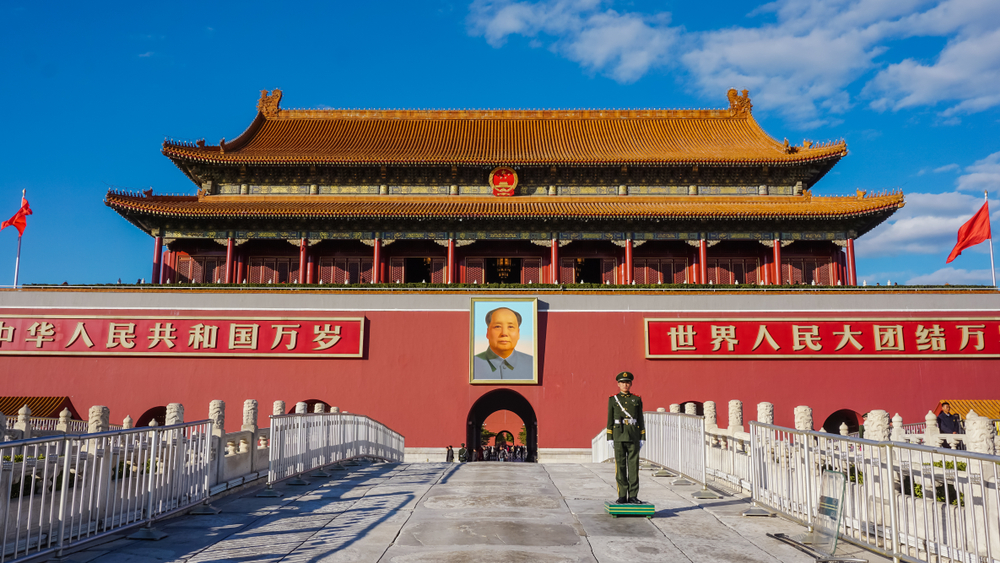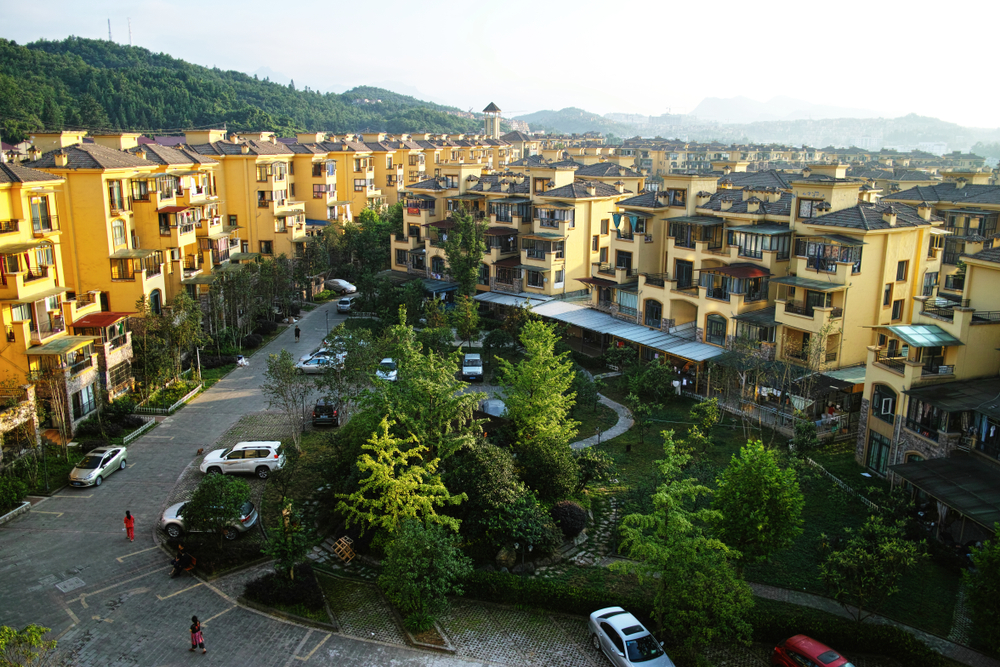Beijing’s call for “common prosperity” cools down property prices in major cities, emerging markets
The squeeze on property prices affected not just China’s tier-one cities, but also investors looking for earners in emerging markets

Few residential markets anywhere in the world have experienced a recent rollercoaster quite like Shenzhen.
After home prices in this southern city facing Hong Kong recorded annual price growth of 14 percent in 2020—despite the worst start of a year on record due to the pandemic—the central government fired Shenzhen’s mayor Chen Rugui and other top officials.
Successor Qin Weizhong was named at the end of April and charged with curbing runaway house prices with strict orders from Beijing.
The impact of the new mayor has been nothing short of miraculous. After failing to sell at auction on August 4, one home in a high-end high school district of Shenzhen—what the Chinese eagerly refer to as being in a sought-after xuequfang—eventually sold more than two weeks later for about CNY100,000 ($15,400) per square metre, according to reports in state-run newspapers in Shenzhen.
That price tag comes in at considerably more than the average price in Tokyo, and only a touch below what buyers would expect to pay in Manhattan. But by Shenzhen standards, it was a bargain: coming in at a staggering 40 percent below what homebuyers were paying in the same sought-after downtown district just three months prior.
Up to June, the average price of a second-hand home in Shenzhen fell 15 percent this year, while previously runaway prices of new homes were scaled back to just 3.5 percent growth versus a year earlier, according to official government statistics.
Shenzhen was turned from a fishing village into a model special economic zone under Chinese leader Deng Xiaoping’s reforms in the 1980s. And now the city is once again being used as a model for how to fight rising home prices seen as inequitable by China’s rulers.
During the first half of this year alone, Shenzhen’s municipal authorities—closely watched by the central government—enacted more than 300 rounds of cooling measures aimed at reining in home prices, according to Hong Kong’s South China Morning Post which closely tracks house prices across its mainland frontier with Shenzhen.

Among them, further restrictions on purchase eligibility have been enacted as well as China’s first pricing reference scheme which sets guideline prices below actual transaction prices, in effect capping price growth and speculation, while increasing the land available for development which has eased the rush for land and property in the city.
“The irrational mania that appeared in Shenzhen’s first-hand residential property market in the past few quarters was gradually diminished and replaced by a more prudent and rational sentiment,” Carlby Xie, research director for Southern China at Savills, said in July.
This dramatic shift from post-lockdown resurgence to subdued sales has been replicated across China’s largest cities, engines of the country’s residential market.
In July, the growth rate of new and second-hand home prices in Beijing, Shanghai, Shenzhen and Guangzhou collectively climbed just 0.4 percent, nearly half the rate recorded a month prior, according to central government statistics.
Beijing saw the strongest gains with just 0.8 percent price growth on new homes in the Chinese capital. But that’s a far cry from China’s boom years and the gains previously witnessed in the capital.
n recent months, China’s top central government officials have increasingly echoed a now commonly heard refrain from the Xi Jinping: “Housing is for living, not for speculation”.
Vice Premier Han Zheng became the latest top Chinese politician to repeat the mantra after a meeting with Xi at the end of July in which the central government said it would aim to clean up illicit funds and other “illegal” activities related to the property sector over the next three years.
New measures designed to tackle house prices, announced simultaneously by the central government, included greater scrutiny of capital inflows and higher mortgage rates.
“These measures do not target any cities in particular,” says Jesse Wang, member of the judging panel at PropertyGuru Asia Property Awards (Mainland China) and director of FG Studio in Shanghai which designs housing sales centres across China for developers including Greenland Group, Landsea Group and China Resources Holdings. “I think the purpose is designed to curb what has been a strong rebound since the Covid-19 lockdowns.”

There is every sign that residential market restrictions in China are here to stay and will likely expand. When Xi and the central government spoke of its new overarching policy focus on ‘common prosperity’ in July, the property sector and soaring house prices were named among the worst offenders.
China watchers say that Xi has roughly quadrupled the rate at which he has used the term “common prosperity” so far this year, a sure sign among Sinophiles that policy change is in the air—and here to stay for the foreseeable future.
“The government’s resolve to balance housing prices is believed to aid the ‘common prosperity’ effort,” Wen Sheng, an editor of the nationalistic Global Times newspaper wrote in an editorial on the new policy in late August. He cited the education sector as the other key industry deemed to be eroding family wealth in China.
The opportunity to make gains seen in past years haS diminished as the entry prices have continued to rise and restrictions remain tight. At the same time, the country continues to shift to more sustainable economic policies
While previous efforts to rein in soaring house prices in China have focused on the largest cities known as tier-one in China, including Beijing, Shanghai, Shenzhen and Guangzhou, there are signs Beijing is extending its increasingly strict oversight further into the provinces.
In July, housing officials held talks to discuss runaway prices with counterparts in the small cities of Yinchuan, Xuzhou, Jinhua, Quanzhou and Huizhou—all among the best performers this year in terms of price growth.
The previous month, new home prices in Yinchuan grew more than 11 percent in a year, making this little-known city of 2.3 million people in Western Ningxia province the second-best performer among China’s cities, according to the official central government statistics.
Only Guangzhou recorded higher rises in new home prices over the same period, but its growth slowed to just 0.2 percent in July as city officials tried desperately to rein in the market.
Asked where the next price growth hotspots might be seen in China, Savills’s director of research James MacDonald suggested new opportunities in the residential and retail market disappear as quickly as they appear amid increasingly strict oversight.
“The opportunity to make gains seen in past years has diminished as the entry prices have continued to rise and restrictions remain tight,” says MacDonald. “At the same time, the country continues to shift to more sustainable economic policies.”

Capital markets have reacted with caution to the new regulatory winds blowing from Beijing. At the end of June, Chinese property stocks slumped to ten-year lows with developer Vanke reaching a 30-month low of CNY24.08 in Shenzhen, and Poly Developments and Holdings closing to CNY12.13 in Shanghai, its lowest price in two years.
Investment banks and rating agencies including Morgan Stanley have in recent weeks downgraded their view on China’s property sector and its leading companies amid stricter government policy.
More: 6 places to see in Bangkok weekenders’ go-to beach town Hua Hin
“Continuous de-leveraging may affect developers’ land acquisition capacity and growth outlook, leading to marginal downside risks to property management companies’ contract gross floor area growth,” Morgan Stanley analysts including Chloe Liu wrote in a note at the end of August.
The million-dollar question now for China’s reeling residential market: Where will be the new centres of growth and what will these look like?
With even lower-tier cities facing central government scrutiny, developers and investors will look to the ever further outer edges of China’s biggest cities, says Luo Minjie, an industry expert consultant at PropertyGuru Asia Property Awards (Mainland China) and a director of Waterfront Urban and Rural Development, a housing subsidiary of state-owned Sichuan Port and Shipping Investment Group.

Although much has been made of China’s rapid migration to its expanding cities, Luo says that urbanisation has still only reached 60 percent and is expected to climb much higher over the next 15 years or so as China further catches the 80 percent urbanisation rates recorded in some developed countries.
“A 20 percent potential raise indicates that nearly 300 million farmers will become urban residents,” says Luo. “Urbanisation in China still has huge potential.”
Citing the example of his native Sichuan province, one of the most densely populated corners of the globe, Luo speaks of small cities including Qionglai, Chongzhou and Jianyang—all satellites of the provincial capital Chengdu—as possible new centres of residential growth and opportunity for homeowners and developers.
He said his own company Waterfront Urban and Rural Development is focusing more on cultural tourism projects, holiday and leisure accommodation, and rural revitalisation development in response to the government’s stricter oversight of the residential market.
The rental market, long maligned in a country where house ownership is considered important in the context of marriage, family and wealth, is viewed by many market observers as a beneficiary of the new regulatory environment in China. The rental market in Shanghai, which has witnessed the steepest house prices in China and among the highest anywhere, has bucked the trend in recent months, according to Savills.
More: Green momentum grows in Asia, propelled by disruptors and innovators
The government has recently allowed developers to convert existing developments to residential lease usage and permitted rentals in future Real Estate Investment Trusts or REITS which, in turn, has fueled the rental market in China’s largest—and still costliest—city.
“Hurdles remain given the low yields and a lack of investment-grade stock,” cautions MacDonald of Savills, but added: “Institutional investors are increasingly exploring opportunities in the leasing market as domestic demand for rental properties continues to grow in leading cities.”
With the range of investment opportunities further narrowing in mainland China, private investors look all but certain to seek out house-buying opportunities outside of the mainland. The central government has in the past clamped down on cross-border capital flows to rein in speculation overseas. But there have been no such new measures amid the round of recent domestic price and buying curbs, said Georg Chmiel, group executive chairman of China’s largest overseas online house-buying portal Juwai IQI.
In July, inquiries on Juwai.com increased by double digits across at least ten of the most popular overseas markets among Chinese house buyers such as Australia, South Korea, and the United Kingdom. “Some of this growth will be due to buyers squeezed out of their local market,” says Chmiel. “The clampdown on investors in China’s tier-one cities has been a driver of demand for overseas investment since it began.”
The original version of this article appeared in Issue No. 168 of PropertyGuru Property Report Magazine.
Write to our editors at [email protected].
Recommended
Why everyone is moving to Selangor and Johor: Malaysia’s real estate comeback
Malaysia’s upturn in fortunes is especially prevalent in secondary destinations such as Selangor and Johor
Penang’s silicon boom: How the US-China tech war is supercharging local real estate
Penang’s booming semiconductor industry has created ripples within the local real estate sector
New leader, new opportunities: How Hun Manet is shaking up Cambodia’s real estate game
Hun Manet is overseeing decent economic growth and widening access to the country’s real estate market for foreigners
Singapore embraces inclusive housing reforms amid resilient demand
The Lion City’s regulatory strength continues to exert appeal for international investors








